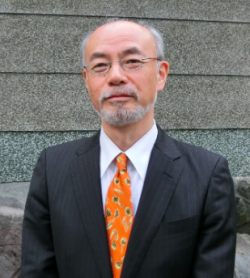Details
December 5, 2019
3:00 pm - 5:00 pm
170 St George St, Room 317
170 St George St, Room 317
University of Toronto/McMaster University
YEHAN NUMATA BUDDHIST STUDIES PROGRAM 2019-20
SASAKI Shizuka (Hanazono University)
READING GROUP: “To What Extent Can the Vinaya be Dissected?”
THURSDAY, December 5, 2019, 3-5pm, UTSG, JHB 317
LECTURE: An Outline of the Analytical Study of Adhikaraṇa in the Vinaya Texts
FRIDAY, December 6, 2019, 4-6pm, McMaster, University Hall 122
In Buddhist communities today, there are six mostly complete lines of Vinaya Piṭakas. When these Vinayas are compared, they agree in general structure, but there are also various differences. In all the Vinayas, old and new elements are mixed together. Therefore, it is impossible to identify “the original” one on which the other five are based. It is clear that each of the six Vinayas has arrived in its current form through various changes over the course of a long history. Given this situation, when one does research on Vinaya materials, it is imperative to treat these materials from a historical point of view. If one proceeds without a historical perspective, one simply stops at the stage of introducing the contents of the six existing Vinayas and finding their differences.
So how can we clarify the very complicated historical process of change among the six Vinayas? The essential task is clear, namely, the complete dissection of the Vinaya. What does this mean? The multiple layers, formed at different times, within each of the six Vinayas, are identified and the newest layers are stripped away, one by one. The idea is to follow, in reverse order, the historical process by which the Vinayas were formed. This cannot be accomplished by a simple comparison of the six Vinayas. Rather, it is necessary to analyze each Vinaya individually and to distinguish between the newer and older layers in each. In this lecture, I shall introduce some examples of this kind of dissection and propose basic guidelines for future research on the Vinaya.
 SASAKI Shizuka is a Japanese scholar of Indian Buddhism. From his youth he aspired to become a chemist and so attended and graduated from the Kyoto University Faculty of Engineering. However, after twists and turns he changed his course to Buddhist Studies and entered the Faculty of Letters, also at Kyoto University. He receivedhis PhD from Bukkyō University by presenting a thesis titled “Buddhist Sects in the Aśoka Period”, which has since been published in Japanese as The Transformation of Indian Buddhism: Why Has Buddhism Become so Diversifed? He is now researching the historical process of the compilation of Vinaya texts, the logical structure of Abhidharma, the origin of Mahāyāna Buddhism, and the relationship of science and Buddhism. He has been awarded prizes from the Japanese Association of Indian and Buddhist Studies (1992) and the Suzuki Learning Foundation (2003). His publications comprise about 90 articles, fifteen monographs, three collaborations and two translations.
SASAKI Shizuka is a Japanese scholar of Indian Buddhism. From his youth he aspired to become a chemist and so attended and graduated from the Kyoto University Faculty of Engineering. However, after twists and turns he changed his course to Buddhist Studies and entered the Faculty of Letters, also at Kyoto University. He receivedhis PhD from Bukkyō University by presenting a thesis titled “Buddhist Sects in the Aśoka Period”, which has since been published in Japanese as The Transformation of Indian Buddhism: Why Has Buddhism Become so Diversifed? He is now researching the historical process of the compilation of Vinaya texts, the logical structure of Abhidharma, the origin of Mahāyāna Buddhism, and the relationship of science and Buddhism. He has been awarded prizes from the Japanese Association of Indian and Buddhist Studies (1992) and the Suzuki Learning Foundation (2003). His publications comprise about 90 articles, fifteen monographs, three collaborations and two translations.

